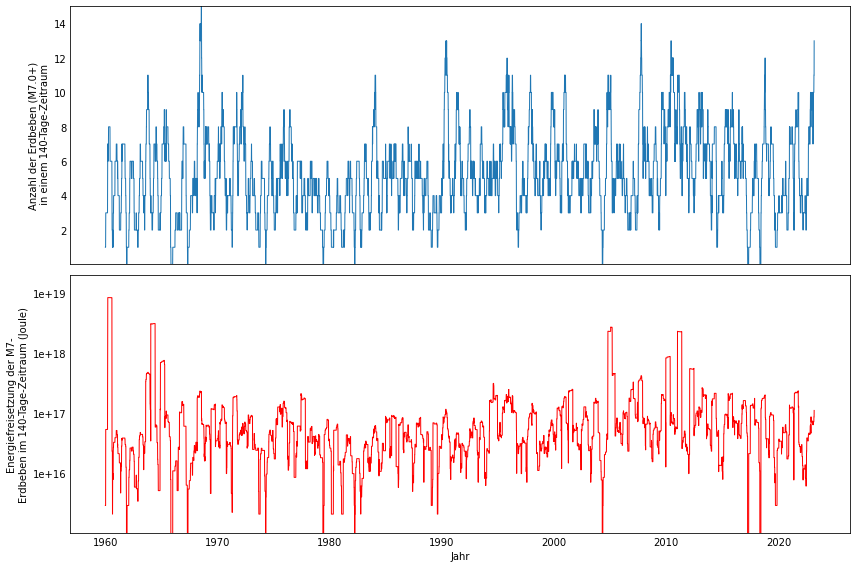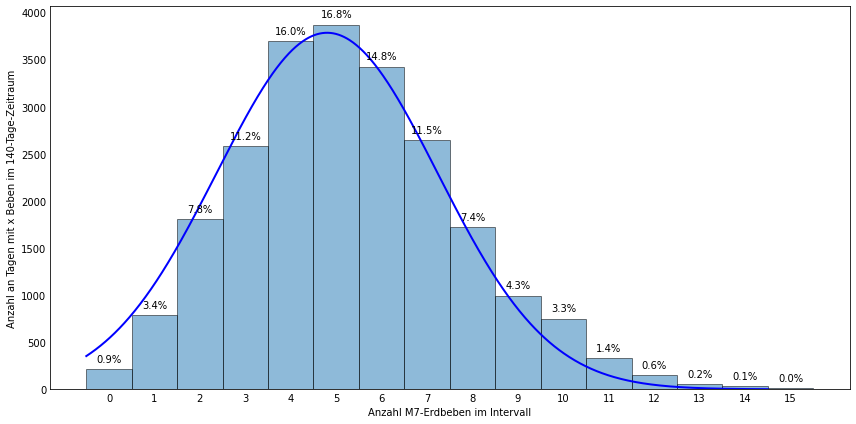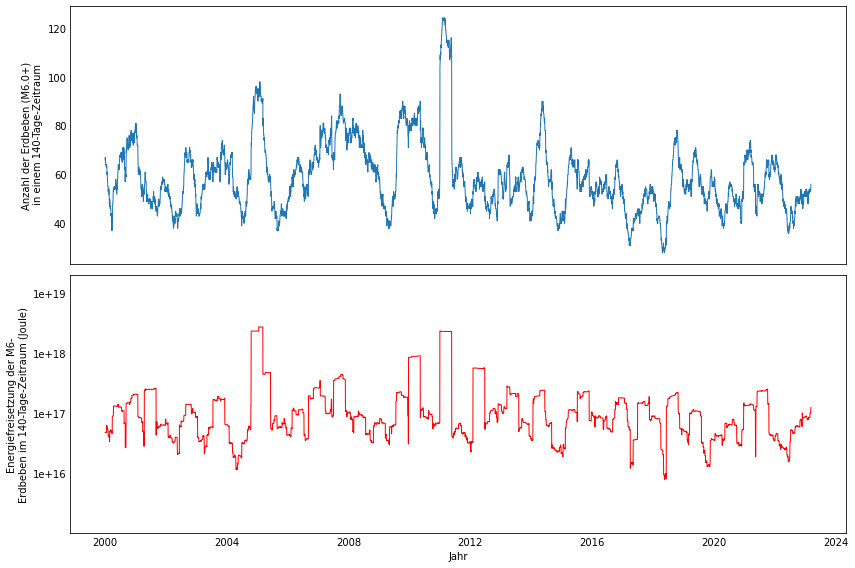Several strong earthquakes have shaken parts of the globe this year so far. The latest quakes in mid-May hit parts of Vanuatu and New Zealand, creating little tsunamis. Despite their limited impact, these earthquakes have not only unsettled neighboring islands but also contributed to a total of 13 earthquakes with a magnitude over 7 worldwide since the beginning of 2023, one of the highest numbers recorded. The reasons behind the increased seismic activity this year and how to interpret the situation.
The earthquake in Turkey and Syria in early February, which claimed the lives of over 55,000 people, was the strongest earthquake recorded so far this year. With a magnitude of 7.8, followed by a magnitude 7.6 a few hours later, it will go down in history as a catastrophic event. The earthquakes mentioned south of Vanuatu had much less dramatic consequences. The other nine magnitude 7 earthquakes of the year remained largely harmless due to their depth or remoteness. Only during the Papua New Guinea earthquake on April 2 were houses destroyed and seven lives lost.
With the exception of the major earthquake in Turkey, the most significant earthquakes of 2023 have been relatively harmless, unspectacular, and often not worth mentioning. However, it is currently their number that is extraordinary. Since the beginning of the year, the United States Geological Survey (USGS) has recorded 13 earthquakes with a magnitude of 7 or higher. On average, this is the number expected for an entire year. In 2017, there were less than half that number for the entire year (6). Calculated over a 140-day period, which is the time that has passed since the beginning of the year, the number is record-breaking.
The third-highest number of major earthquakes since recording began
Since 1960, there have been comprehensive records of major earthquakes. At that time, global investment in seismic monitoring was driven by the Cold War and worldwide nuclear tests, not earthquakes, to detect possible enemy bomb tests. As a useful side effect, nearly complete earthquake catalogs for earthquakes with a magnitude over 6 have been available since the mid-1960s. Comparing the 13 M7 earthquakes of the last 140 days with other equally long periods in recent years (Graph 1), it is evident how rare this clustering is.

There have been only five occasions when there were 13 or more magnitude 7 earthquakes within a 140-day period. Among them, there were only once each with 14 and 15 earthquakes. Overall, there have been relatively strong fluctuations since 1960. While an average of about five magnitude 7 earthquakes occur every 140 days, the normal deviations range from two to ten earthquakes. Outliers with more or fewer earthquakes are rare. In 2017 and 2018, for example, there were 140-day periods without any magnitude 7 earthquakes, followed immediately by twelve earthquakes within 140 days.
The highest number of earthquakes since 2010
The distribution of values (Graph 2) illustrates how much the current deviations from the average are. Approximately half of all cases have between four and six earthquakes per 140 days. No earthquakes occur in less than one percent of the intervals, and 13 or more earthquakes occur in only 0.3% of the cases. Therefore, the current clustering is at the upper end of what is statistically expected and is three times rarer than no earthquakes occurring.

For this statistically unlikely occurrence to happen, several factors must come together. One important factor is the clustering of earthquakes. Often, major earthquakes with a magnitude over 7 occur as a single event followed by aftershocks, so they are generally recorded as a single earthquake in the statistics. In 2023, two earthquakes deviated from this pattern: both the Turkey earthquake and now Vanuatu consisted of a pair of M7 earthquakes within a few hours, with the second one triggered directly by the first. Without the first earthquake, the second one would probably not have occurred. However, even with eleven earthquakes, we are still within the top 2.5%, not taking into account previous clusters.
Statistics show no evidence of increased activity
While the statistical clustering is real, it does not have a specific cause. Many earthquakes might lead to the perception that tectonic activity on Earth has (temporarily) increased. This would not only apply to large earthquakes but to the entire seismic spectrum, resulting in increased energy release. However, we are not observing this at the moment (Graph 1, below). The energy released by earthquakes is within the normal range. There is also no clustering of smaller earthquakes (Graph 3). According to the Gutenberg-Richter law, a high number of large earthquakes, whether tectonic or caused by external influences, would also mean a large number of small earthquakes.
The opposite is the case. Currently, in comparison with other intervals since 2000, there are below-average numbers of earthquakes with a magnitude over 6, despite many aftershocks. The energy release (Graph 3, below) is increased due to the higher magnitudes. The stronger the earthquake, the higher the energy.

Conclusion: Clustering of strong earthquakes is a coincidence
Since a generally increased earthquake activity can be ruled out as the cause, only normal statistical variation remains as an explanation. The strength of an earthquake depends on many factors. Whether an earthquake ends up with a magnitude of 6 or 7 is still uncertain at the beginning. It is the random circumstances that decide. Since the beginning of the year, five earthquakes with a magnitude of 7.0 have just made it into the M7 ranking, and three others with 7.1 were only at the lower end. Just a train line sometimes arrives on time multiple times in a row, earthquakes can sometimes be a bit stronger or weaker. In statistics, everything ends up as an extreme value, which can be a cause for concern depending on how it is viewed.